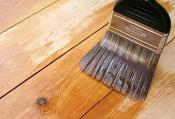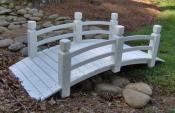Search
Login
Recommended
Calculation of the number of wallpapers and choice of glue
When calculating the number of rolls of wallpaper, the total depends on the size of the roll (its length and width). It is necessary to take into account windows and doors, the repeatability of the pattern (if the wallpaper contains a repeatable pattern).
Content
- General information
- Calculation of custom rolls
- Calculation table of standard rolls
- Calculation of the number of rolls on the ceilings
- Tips for choosing the colors of rolls
- Glue selection video
- Glue application video
General information
The usual width of a standard roll is 520 mm., The length of a standard roll is 10.05 meters.
Designed tables for determining the number of rolls of standard sizes that you will need for gluing walls and ceilings, we provide below.
Calculation of custom rolls
Modern manufacturers very often produce wallpaper in non-standard rolls. If you chose such a wallpaper, then calculate the amount you need in the following way:
- walls:
it is necessary to measure the height of the wall from the baseboard to the ceiling.
Having learned the length of the roll of wallpaper, it is necessary to divide this length by the measured height of the wall.
Thus, you will find out how many pieces (whole) you can get for a sticker from one roll.
Then, measure the perimeter of the room (this is the sum of the lengths of all the walls), exclude windows and doors.
Dividing the number of the perimeter by the size of the width of the roll, you will determine how many whole strips are needed to paste the room.
Further, dividing the total number of paintings by the number of whole strips in one roll, the result of your calculations will be the number of rolls required for pasting the walls.
If pieces remain from the roll, you can stick them over the doors and windows, if the pieces do not fit, you need to purchase another roll;
- ceilings:
measure the length of the room, which will be equal to the length of a whole piece of wallpaper for the sticker.
Divide the width of the room by the width of the roll, so you know how many whole strips are needed for the ceiling.
Multiplying the length of a whole piece by the number of pieces and dividing all this by the length of the roll - you will get the number of rolls necessary for pasting the ceilings.
Given the amount of waste, summing the number of rolls on the walls and ceiling you will get the final figure.
Calculation table of standard rolls
Knowing the area of \u200b\u200bthe room in meters, using the table below - at the intersection of the vertical and horizontal columns (your room size) - you will find out the number of rolls needed to paste the room.
Calculation of the number of rolls on the ceilings
It is necessary to measure the perimeter of the ceiling (the sum of the four sides). The number of rolls that will be required for pasting the ceiling is shown next to the perimeter.
|
CEILINGS |
|
room perimeter, m |
number of rolls |
room perimeter, m |
number of rolls |
room perimeter, m |
number of rolls |
room perimeter, m |
number of rolls |
|
11 |
2 |
16 |
4 |
21 |
6 |
26 |
9 |
|
12 |
2 |
17 |
4 |
22 |
7 |
27 |
10 |
|
13 |
3 |
18 |
5 |
23 |
7 |
28 |
10 |
|
14 |
3 |
19 |
5 |
24 |
8 |
29 |
11 |
|
15 |
4 |
20 |
5 |
25 |
8 |
30 |
11 |
Tips for choosing the colors of rolls
When choosing a wallpaper, the buyer should not be mistaken with the colors of the rolls, each roll of wallpaper has a marking with a batch number, carefully study the marking.
There will be no problems with the identity of the color tones if you do everything right, i.e. rolls should belong to one lot.
If you bought wallpaper made by hand, you need to check the color, i.e. unroll the rolls a little and put them side by side, this will help you better choose the tones.
If you are not satisfied with the color, or if there is a noticeable difference in the colors of the rolls, you can ask to change the rolls.
Glue selection
To glue the wallpaper well, you need to use high-quality glue suitable for gluing exactly those wallpapers for which the glue is intended.
All information about the glue is in the instructions for use and use, carefully study it before using.
universal glue
An adhesive that is suitable for almost all types of paper-based wallpapers. When decal heavy wallpaper, you need to reduce a certain amount of water.
glue for heavy wallpapers
This glue is intended for the sticker of heavy wallpaper (pile, fabric, embossed, embossed, vinyl, etc.).
fungicidal glue
Rooms with high humidity have the ability to develop mold under wallpaper, especially under waterproof, such as washable, heavy vinyl, etc.
To prevent the development of mold, use fungicidal glue, which kills fungal spores.
thixotropic adhesive
Plastic, well-setting adhesive, convenient to use in hard to reach places. It is used for pasting by heavy wall-paper and fabric coverings.
non-sticking glue
If the wallpaper, when glued, can be damaged by glue (the picture is smeared or smeared) - use non-soiling glue.
When buying such wallpaper, it is usually expensive, luxury hand-painted wallpaper, consult with the seller about the selection of glue.
wallpaper repair glue
In cases where it is necessary to glue the departed parts of the wallpaper, it is often a heavy wallpaper, use repair glue. Such glue can glue vinyl to vinyl.
Glue application
For ease of use when applying glue, it is good to use a large, wide brush. According to the instructions indicated on the packaging of the glue, spread the glue in a plastic bucket or basin, tie a rope across the container so that the brush handle remains clean during operation, the rope will be used as a support.
Modern manufacturers produce hook brushes for ease of use.
Spread strips of wallpaper face down. Glue is applied starting from the middle, smear the edges well and remove all lumps.
Glue can be applied with a short-haired paint roller. In this case, a pallet is needed for the roller, glue is poured into it, then glue is applied on the surface of the wallpaper with a roller, rolling the roller is necessary only in one direction - towards the end of the canvas.
Having completely covered the canvas with glue, connect the upper and lower edges of the canvas, almost to touch, long pieces can be folded with an accordion.
Vinyl and light paper wallpapers - stick immediately, heavy wallpapers must first be soaked with glue, some heavy or embossed wallpapers need to be soaked for up to 15 minutes.
Detailed instructions are indicated on the packaging of the adhesive.
When working with expensive exotic wallpapers, in order not to spoil their delicate front side, glue is applied to the wall.
A strip of glue is applied slightly wider than the wallpaper, so that for the next piece it is not necessary to spread the wall close to the edge of the glued canvas - this will eliminate the danger of glue getting on the wallpaper.





